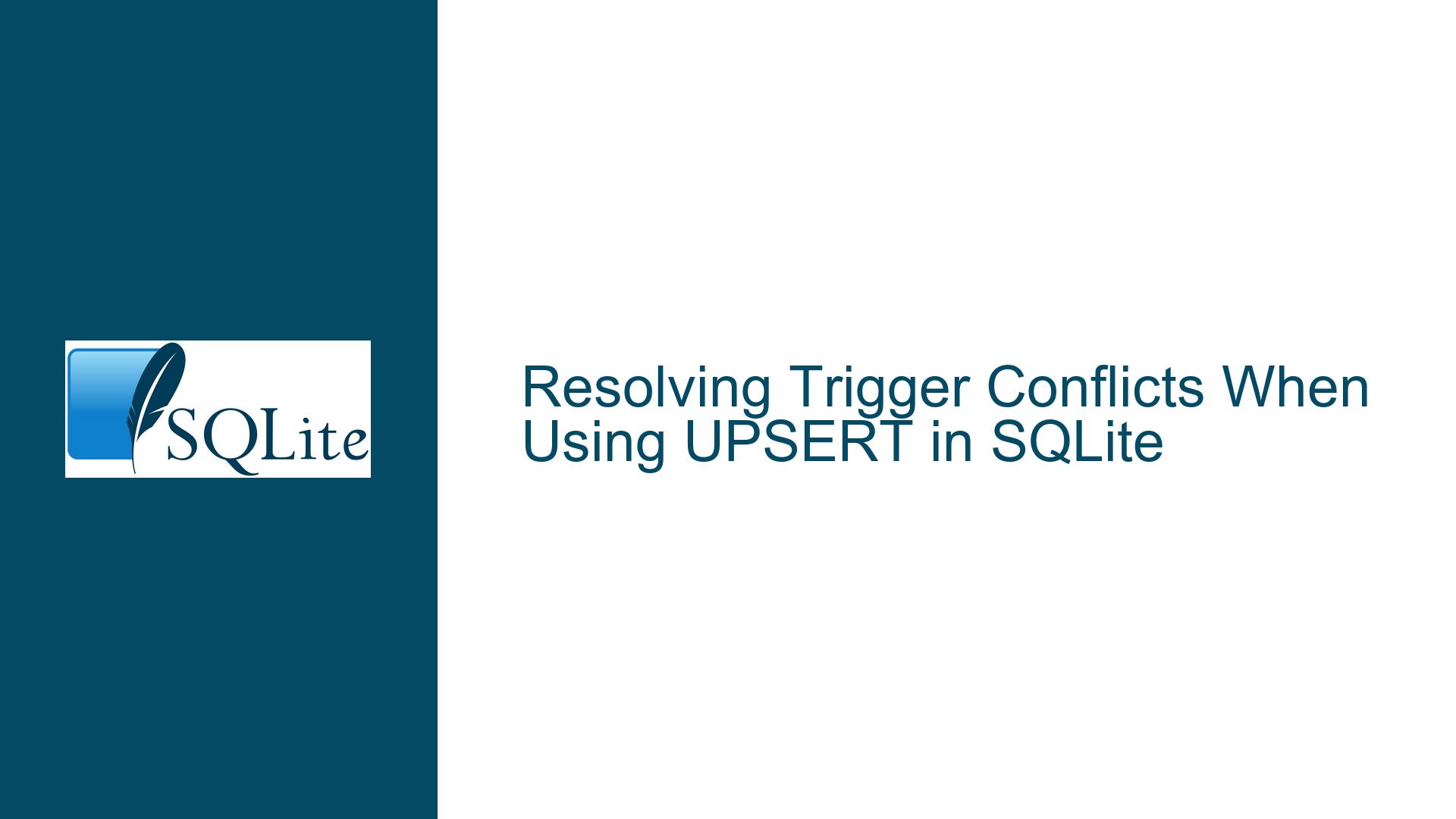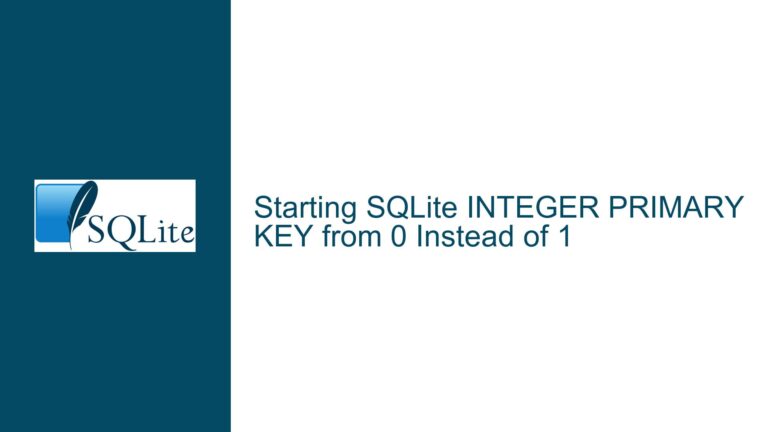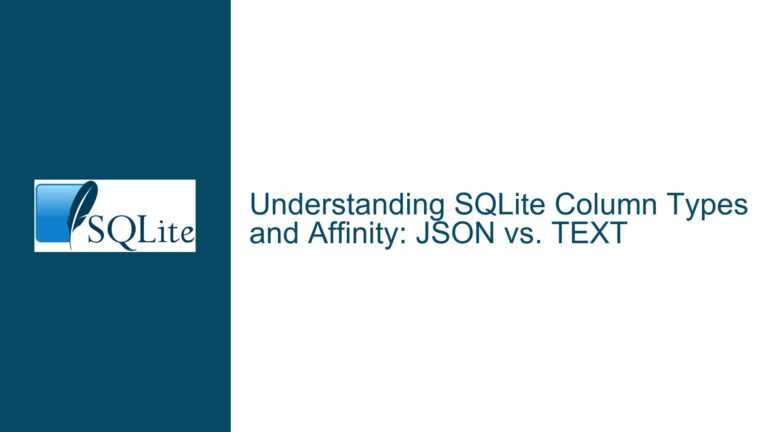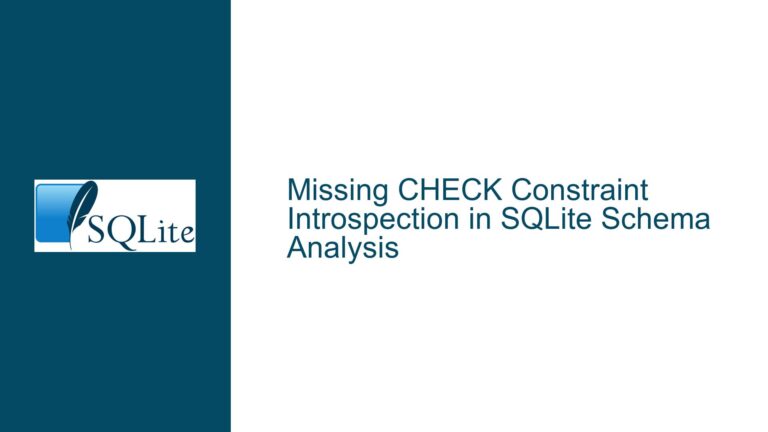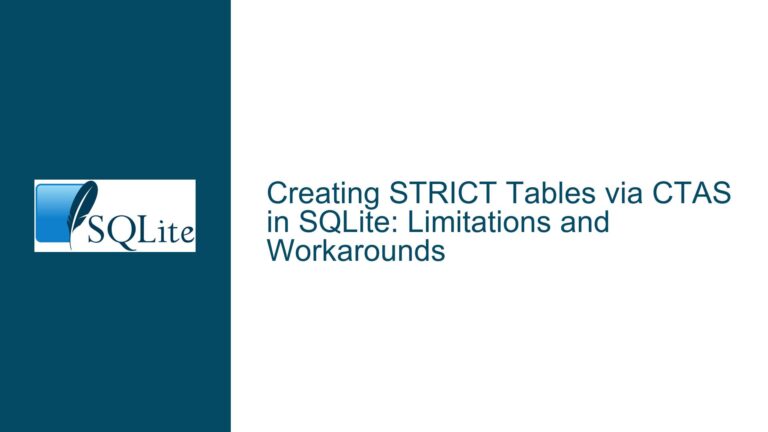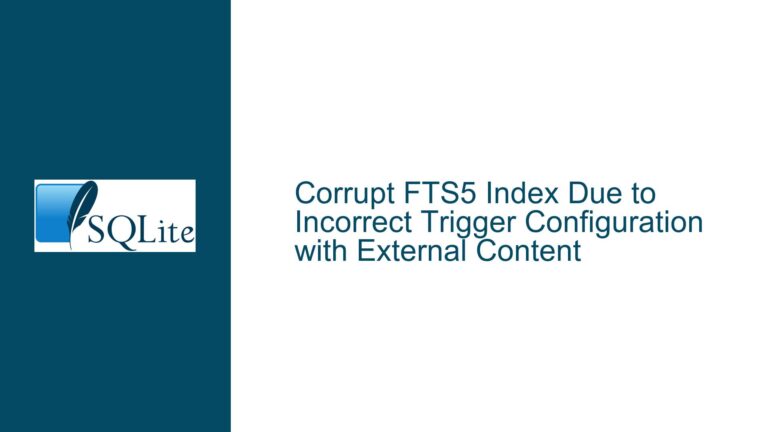Resolving Trigger Conflicts When Using UPSERT in SQLite
Trigger and UPSERT Interaction Leading to Unique Constraint Failures
Understanding the Conflict Between UPSERT Operations and Trigger-Enforced Constraints
When implementing database logic that combines UPSERT operations (INSERT OR UPDATE) with triggers in SQLite, developers may encounter unexpected unique constraint violations. This occurs when a trigger, activated by an UPSERT, attempts to modify a secondary table with its own constraints. The root of the issue lies in how SQLite prioritizes conflict resolution policies across nested operations. Specifically, the conflict resolution strategy of the outermost UPSERT operation may override the strategy defined within triggers, even when operating on separate tables. This behavior can lead to runtime errors that contradict the apparent safeguards (e.g., OR IGNORE) included in trigger logic.
Mechanisms Behind Conflict Policy Overrides in Nested SQLite Operations
Hierarchical Conflict Resolution Inheritance
SQLite applies the conflict resolution policy of the outermost SQL statement to all nested operations triggered by it, unless explicitly overridden. When an UPSERT operation (INSERT ... ON CONFLICT DO UPDATE) fires a trigger, any conflict resolution clauses within the trigger’s logic (e.g.,INSERT OR IGNORE) are superseded by the UPSERT’s policy. This occurs even if the trigger modifies a different table with unrelated constraints. The UPSERT’s policy—designed for the original table—is blindly applied to all subsequent operations in the transaction, including those in triggers.Implicit Constraint Validation Timing
Unique constraints in SQLite are validated immediately upon row insertion or update. Triggers execute within the same transaction as their parent statement, and constraint violations in triggers abort the entire transaction unless explicitly handled. When a trigger attempts to insert a duplicate value into a uniquely constrained column, the absence of an effective conflict resolution policy results in an immediate error, regardless of the triggering statement’s intent.Scope of
ON CONFLICTClauses
TheON CONFLICTclause attached to an UPSERT operation governs all conflict scenarios arising from the statement’s execution, including those in triggered actions. This global application often clashes with localized conflict handling intended for auxiliary tables. Developers expecting trigger-specific conflict resolution find that theirOR IGNOREdirectives are ignored, as the outer UPSERT’s policy takes precedence.
Strategies for Isolating Trigger Logic from UPSERT Conflict Policies
Explicit Conflict Handling Within Triggers
Replace implicit conflict resolution shortcuts (OR IGNORE) with explicitON CONFLICTclauses in trigger-controlled INSERT/UPDATE statements. This forces SQLite to prioritize the trigger’s conflict policy over the outer UPSERT’s:CREATE TRIGGER t1_au AFTER UPDATE ON t1 WHEN NEW.c2 != OLD.c2 BEGIN INSERT INTO t2 (c1) VALUES (NEW.c2) ON CONFLICT (c1) DO NOTHING; -- Overrides outer policy END;The
ON CONFLICT (c1) DO NOTHINGclause directly attached to the trigger’s INSERT statement ensures that conflicts int2are handled locally, decoupling them from the UPSERT’s influence.Preemptive Existence Checks in Trigger Conditions
Incorporate subquery conditions into trigger definitions to bypass unnecessary insertions. By checking for the existence of a value before attempting insertion, triggers avoid invoking conflict resolution altogether:CREATE TRIGGER t1_ai AFTER INSERT ON t1 WHEN NOT EXISTS (SELECT 1 FROM t2 WHERE c1 = NEW.c2) BEGIN INSERT INTO t2 (c1) VALUES (NEW.c2); -- No conflict possible END;This method eliminates reliance on conflict policies by ensuring the INSERT operation only occurs when the target value is absent from
t2.Decoupling Triggers into Policy-Specific Units
For complex trigger logic requiring multiple dependent operations, decompose triggers into smaller, policy-specific units. Use SQLite’s trigger execution order (alphabetical by name) to sequence actions:CREATE TRIGGER t1_au_precheck AFTER UPDATE ON t1 WHEN NEW.c2 != OLD.c2 AND NOT EXISTS (SELECT 1 FROM t2 WHERE c1 = NEW.c2) BEGIN INSERT INTO t2 (c1) VALUES (NEW.c2); END; CREATE TRIGGER t1_au_postaction AFTER UPDATE ON t1 WHEN NEW.c2 != OLD.c2 BEGIN -- Subsequent actions dependent on t2 insertion END;By isolating the insertion logic into a separate trigger (executing first due to its name), subsequent triggers can safely assume the presence of the required data in
t2.Transaction Control with Savepoints
Wrap UPSERT operations and their associated triggers in savepoints to isolate constraint violations:SAVEPOINT upsert_operation; INSERT INTO t1 (c1, c2) VALUES ('one', 'test_two') ON CONFLICT (c1) DO UPDATE SET c2 = EXCLUDED.c2; -- On error: ROLLBACK TO upsert_operation; COMMIT;This allows partial rollbacks of the UPSERT and its triggers without aborting the entire transaction, providing an opportunity to handle errors programmatically.
Implementation Considerations and Tradeoffs
Performance Overhead of Existence Checks
PreemptiveEXISTSsubqueries in triggers introduce additional read operations, which may impact performance on large datasets. Benchmarking is essential to determine whether the cost of these checks outweighs the overhead of conflict resolution and rollbacks.Maintainability of Explicit Conflict Clauses
UsingON CONFLICT DO NOTHINGwithin triggers explicitly documents the intended conflict policy, making the codebase more maintainable. However, developers must ensure that such clauses are consistently applied across all relevant triggers to avoid oversight.Atomicity of Trigger Chains
Decomposing triggers into sequential units relies on naming conventions to enforce execution order. This introduces fragility, as future modifications to trigger names could inadvertently alter execution sequences. Commenting trigger dependencies is critical for long-term maintainability.Cross-Table Constraint Synchronization
For scenarios wheret2.c1must mirror a subset oft1.c2values, consider using SQLite’s foreign key constraints withON DELETE CASCADEandON UPDATE CASCADEclauses. This delegates referential integrity to the database engine, reducing the need for custom trigger logic:CREATE TABLE t2 ( c1 TEXT UNIQUE NOT NULL, FOREIGN KEY (c1) REFERENCES t1(c2) ON DELETE CASCADE ON UPDATE CASCADE );Note that this approach requires
t1.c2to have a unique constraint, which may not align with all use cases.
Conclusion
The interplay between UPSERT operations and triggers in SQLite demands careful consideration of conflict resolution scoping. By decoupling trigger logic from the parent statement’s conflict policy—either through explicit ON CONFLICT clauses or preemptive existence checks—developers can enforce table-specific constraint handling. These strategies ensure robust data integrity while maintaining the flexibility and atomicity expected from modern database operations.
